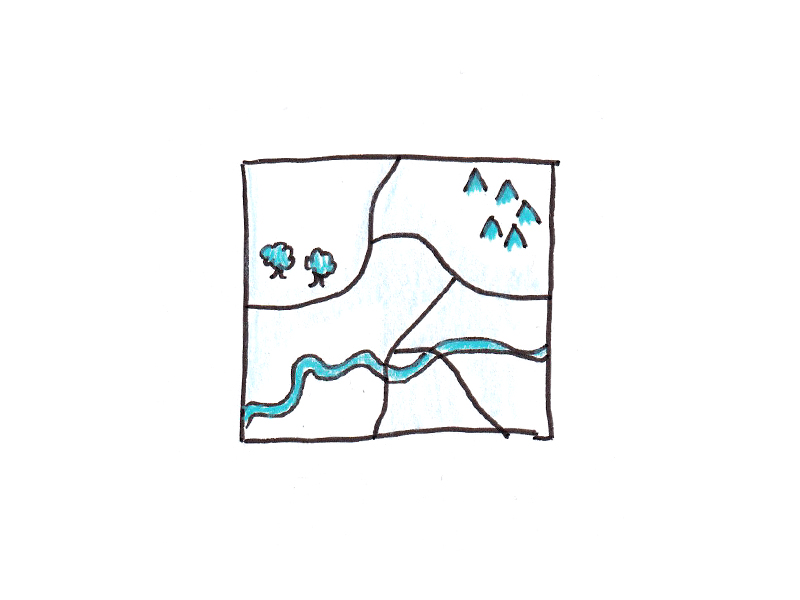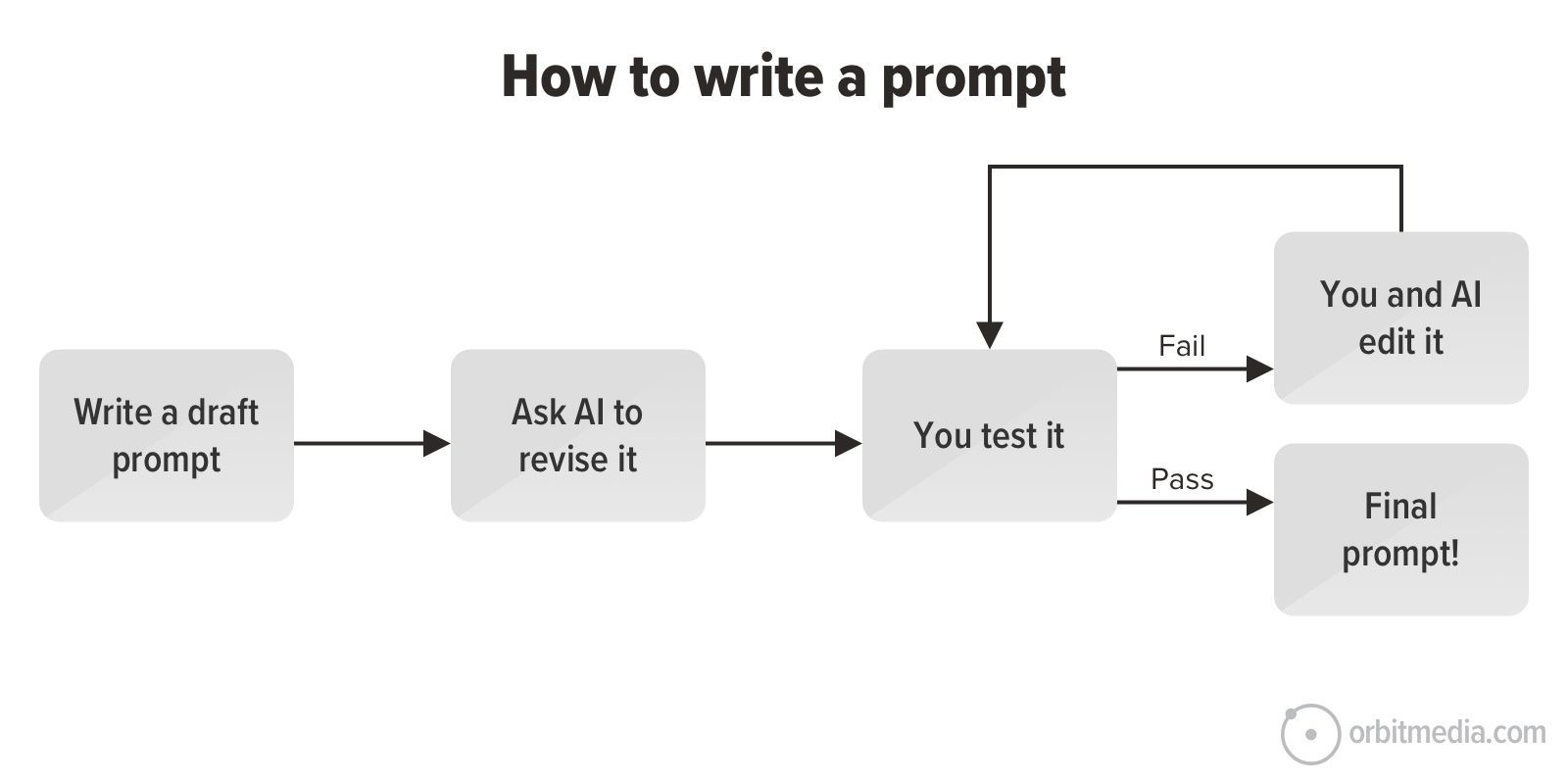The Agentic Web and Original Sin
Microsoft is putting forth compelling proposals for the Open Agentic Web. However, the proposal needs digital payments, which will be key to creating a new content marketplace for AI.

Ethan Zuckerman wrote in The Atlantic in 2014:
I have come to believe that advertising is the original sin of the web. The fallen state of our Internet is a direct, if unintentional, consequence of choosing advertising as the default model to support online content and services. Through successive rounds of innovation and investor storytime, we’ve trained Internet users to expect that everything they say and do online will be aggregated into profiles (which they cannot review, challenge, or change) that shape both what ads and what content they see. Outrage over experimental manipulation of these profiles by social networks and dating companies has led to heated debates amongst the technologically savvy, but hasn’t shrunk the user bases of these services, as users now accept that this sort of manipulation is an integral part of the online experience.
Marc Andreessen, who was there when the web was born, explained in a 2019 podcast why this sin was committed (this quote is lightly edited for clarity):
One would think the most obvious thing to do would be building in the browser the ability to actually spend money, right? You’ll notice that didn’t happen, and in a lot of ways, we don’t even think it’s unusual that that didn’t happen, because maybe that shouldn’t have happened. I think the original sin was we couldn’t actually build economics, which is to say money, into the core of the internet and so therefore advertising became the primary business model…
We tried very hard to build payments into the browser. It was not possible…We made a huge mistake. We tried to work with the banks and we tried to work with the credit card companies…it was sort of the classic kind of single point of failure bottleneck, or at least in this case, two points of failure. Visa and MasterCard essentially had a duopoly at the time, and so they were just literally, if they did not want you to be in the switch, they did want you to be able to do transactions, you just simply weren’t going to do it.
I think Andreessen is too hard on himself, and I think Zuckerman is too harsh on the model Andreessen created the conditions for. The original web was the human web, and advertising was and is one of the best possible ways to monetize the only scarce resource in digital: human attention. The incentives all align:
- Users get to access a vastly larger amount of content and services because they are free.
- Content makers get to reach the largest possible audience because access is free.
- Advertisers have the opportunity to find customers they would have been never able to reach otherwise.
Yes, there are the downsides to advertising Zuckerman fretted about, but everything is a trade-off, and the particular set of trade-offs that led to the advertising-centric web were, on balance, a win-win-win that generated an astronomical amount of economic value.
Moreover, I disagree with Andreessen that we could have ended up with a better system if the banks and credit card companies had been willing to play ball. In fact, over the last thirty years, the credit card companies in particular have — in part thanks to companies like Stripe — gotten their digital acts together, and are integral to a huge amount of web-based commerce, which itself is driven through digital advertising (the largest category of advertising for both Google and Meta). That too is human, in that the biggest outcome of digital advertising is physical products and real-world experiences like travel (digital products like apps and games, meanwhile, are themselves pursuing human attention).
What was not viable in the 1990s, nor at any time since then, was something like micro-transactions for content. One obvious problem is that the fee structure of credit cards don’t allow for very small transactions; another problem is that the costs to product content are front-loaded, and the potential payoff is both back-loaded and unpredictable, making it impossible to make a living. The biggest problem of all, however, is that micro-transactions are anti-human: forcing a potential content consumer to continually decide on whether or not to pay for a piece of content is alienating, particularly when plenty of alternatives for their scarce attention exist.
Subscriptions do work at smaller scales, because they are ultimately not about paying for content, but giving money to another human (or human institution); from The Local News Business Model:
It is very important to clearly define what a subscriptions means. First, it’s not a donation: it is asking a customer to pay money for a product. What, then, is the product? It is not, in fact, any one article (a point that is missed by the misguided focus on micro-transactions). Rather, a subscriber is paying for the regular delivery of well-defined value.
Each of those words is meaningful:
- Paying: A subscription is an ongoing commitment to the production of content, not a one-off payment for one piece of content that catches the eye.
- Regular Delivery: A subscriber does not need to depend on the random discovery of content; said content can be delivered to the subscriber directly, whether that be email, a bookmark, or an app.
- Well-defined Value: A subscriber needs to know what they are paying for, and it needs to be worth it.
This last point is at the crux of why many ad-based newspapers will find it all but impossible to switch to a real subscription business model. When asking people to pay, quality matters far more than quantity, and the ratio matters: a publication with 1 valuable article a day about a well-defined topic will more easily earn subscriptions than one with 3 valuable articles and 20 worthless ones covering a variety of subjects. Yet all too many local newspapers, built for an ad-based business model that calls for daily content to wrap around ads, spend their limited resources churning out daily filler even though those ads no longer exist.
I expect that this model will endure in the age of AI; obviously I’m biased on this point, but in a world of infinite content-on-demand, common content becomes community: if I’m successful this essay will generate a lot of discussion amongst a lot of people precisely because it is both original and widely accessible, funded by an audience that wants me to keep on writing Articles exactly like this.
The Death of the Ad-Supported Web
The ad-supported web — particularly text-based sites — is going to fare considerably worse. In fact, the most substantive pushback to my defense of advertising was in my own excerpt: most ad-supported content is already terrible, thanks to the bad incentives both Zuckerman and Andreessen bemoaned, and the impossible economics enabled by zero marginal cost content generation and consumption.
The center of this world for the last twenty years has been Google.

Google in its most idealized form Aggregated content consumers by mastering discovery in this world of abundance, directing users to exactly the site they were looking for, which was monetized through ads that were sold and served by Google. Indeed, this is the great irony in the ads antitrust case in which Google is currently embroiled; Eric Seufert asked on MobileDevMemo:
I’ve heard arguments that, because Google suppressed competition in open web advertising markets, those markets should flourish when Google’s monopoly is broken. But my sense is that this ignores two realities. First, that consumer engagement has shifted into apps and walled gardens irreversibly. And second, that Google was keeping the open web on life support, and the open web’s demise will be hastened when Google no longer has an incentive to support it. What happens to the open web when its biggest, albeit imperfect, benefactor loses the motivation to sustain it?
Note Seufert’s two points: walled gardens like social networks are both more attractive to most users and also better for advertisers, and Google might soon lose what little motivation they had left to support the open web. However, that’s not Google’s — and the web’s — only problem. Why go through the hassle of typing a search term and choosing the best link — particularly as search results are polluted by an increasingly overwhelming amount of SEO spam, now augmented by generative AI — when ChatGPT (or Google itself) will simply give you the answer you are looking for?
In short, every leg of the stool that supported the open web is at best wobbly: users are less likely to go to ad-supported content-based websites, even as the long tail of advertisers might soon lose their conduit to place ads on those websites, leaving said websites even less viable than they are today — and they’re barely hanging on as it is!
Microsoft and the Open Agentic Web
This reality is the fly in the ointment of an intriguing set of proposals that Microsoft put forward yesterday at the Build 2025 Developer Conference about “The Open Agentic Web”; here’s CTO Kevin Scott:
The thing that is super important if you think about what an open-agentic web could be, is you need agents to be able to take actions on your behalf, and one of the really important things about agents being able to take actions on your behalf is they have to be plumbed up to the greater world. So you need protocols, things like MCP and A2A and things that likely are going to be emerging over the coming year that will help connect in an open, reliable, interoperable way the agents that you are writing and agents that are being used so actively now by hundreds of millions of people to be able to go access content, to access services, to take action on behalf of users in fulfilling the tasks that have been delegated to them.
One aspect of this vision of the agentic web was Microsoft’s commitment to the Model Context Protocol created by Anthropic; Scott told Nilay Patel in an excellent interview in The Verge that while MCP wasn’t exactly what he would have designed from scratch, ubiquity is more important than semantic differences, particularly when you’re trying to create HTTP for AI agents.
The second part of Scott’s vision was something Microsoft created called NLWeb, a natural language interface for websites that makes them more directly accessible for agents:
If you think back to the web, we have HTTP, and then we had things that sit on top of HTTP, like HTML mainly, that are opinionated about the payload, and so we’re announcing today NLWeb. The idea behind NLWeb is it is a way for anyone who has a website or an API already to very easily make their website or their API an agentic application. It lets you implement and leverage the full power of large language models to enrich the services and products that you’re already offering, and because every NLWeb endpoint is by default an MCP server, It means that those things that people are offering up via NLWeb will be accessible to any agent that speaks MCP. So you really can think about it a little bit like HTML for the agentic web.
We have done a bunch of work already with partners who have been really excited and been able to really very quickly get to quick implementations and prototypes using NLWeb. We’ve worked with TripAdvisor, O’Reilly Media, a ton of really great companies that offer important products and services on the internet to add in a web functionality to their sites so that they can have these agentic experiences directly on their sites.
Scott concluded by re-emphasizing how important it was that the layers of the agentic web be open, and used the evolution of the Internet as his example of why:
So the last thing that I want to say before handing things back over to Satya is to just sort of press on these two points about why like open is so important here. So you know it is unbelievable what can happen in the world when simple components and simple protocols that are composable with one another are out there, exposed to the full scrutiny and creativity of every developer in the world who wants to participate or who has an idea.
This thought game that I play with myself all the time is trying to imagine what the web would have looked like if one of the actors in the early development of the web, say the browser manufacturers, had decided that they wanted to vertically integrate and own the entire web. A hundred percent of the web would have been…dictated by the limits of their imagination, and it’s just obvious with 30 years of history that that wouldn’t have been a very interesting web. The web is interesting because millions, tens of millions, hundreds of millions of people are participating to make it into this rich dynamic thing. That’s what we think we need with the agentic web, and that’s what we’re hoping you all can get inspired to go work on a little bit, to riff on, and to use the full extent of your imagination to help make this thing interesting.
I think that widespread adoption of MCP as a protocol layer and NLWeb as a markup layer sounds excellent; the big hole in Scott’s proposal, however, was pointed out by Patel in that interview:
That is the piece that on the web right now seems most under threat, the underlying business dynamics of I start a website, I put in a bunch of schema that allows search engines to read my website and surface my content across different distributions. I might add an RSS feed, which is a standardized distribution that everyone uses and agrees on. There’s lots of ways to do this.
But if I make a website, I open myself up to distribution on different surfaces. What I will get in return for that is not necessarily money — almost in every case, not money. What I’ll get is visitors to my website, and then I’ll monetize them however I choose to: selling a subscription, display ads, whatever it is. That’s broken, right? As more and more of the answers appear directly, particularly in AI-based search products, traffic to websites has generally dropped. We see this over and over again. What’s going to replace that in the agentic era, where we’ve created new schema for agents to come and talk to my website and receive some answers? What’s going to make that worth it?
Scott in his answer noted that websites would be able to communicate to agents what they wanted to make available and on what terms, along with some vague hand-waving about new advertising models and transactions. The last point is valid: Trip Advisor sells hotel rooms, and O’Reilly sells training courses, and you can see a world where websites based on transactions can not only benefit from exposing themselves to agents, but in fact transact more (and potentially pay an affiliate fee). Patel, however, rightly pressed Scott on the prospects for ad-supported content sites:
As Google keeps more of the traffic for itself or it thinks differently about training data, all this stuff is changing. The trade here is make your website more agentic, and then MCP as a protocol will allow you to build some new business models on it. The problem, as I see it, is that the traffic to the web is in precipitous decline as Google referrals go into decline. How do you fix that problem so that everyone is incentivized to keep building on the web?
I don’t know, honestly.
“The Original Sin” of the Internet lacking native payments was not, in my opinion, a sin at all: advertising supported the human web not because Andreessen failed to make a deal with the credit card companies, but because it was the only business model that made sense.
No, the real neglect and missed opportunity in terms of payments is happening right now: Microsoft is on to the right idea with its adoption of MCP and introduction of NLWeb, but its proposal, by virtue of not including native payments, isn’t nearly as compelling as it should be. The key difference from the 1990s is that on the agentic web native digital payments are both viable and the best possible way to not only keep the web alive, but also in the process create better and more useful AI.
Stablecoins and Agentic Micro-transactions
Start with the viability; from Bloomberg:
Stablecoin legislation overcame a procedural blockade in the US Senate, marking a major victory for the crypto industry after a group of Democrats dropped their opposition Monday. The industry-backed regulatory bill is now set for debate on the Senate floor with a bipartisan group hoping to pass it as soon as this week, although senators said a final vote could slip until after the Memorial Day recess.
I know I have driven long-time Stratechery readers a bit batty with my long-running and still-enduring-in-the-face-of-massive-grift-and-seemingly-unending-scandals interest in crypto, but stablecoins are genuinely a big deal. I wrote a brief explainer last fall when Stripe acquired Bridge:
Stablecoins distill crypto to these most interesting bits. Unlike Bitcoin, stablecoins do not have intrinsic value downstream from a network effect, and unlike Ethereum, they are not set up to execute smart contracts or other applications; rather, their value is right there in the name: they are stable representations of value — usually the U.S. dollar…What remains is a synthetic currency that is digital but scarce, with all of the affordances that allows for, including the ability to move money frictionlessly (thus Collison’s analogy). The analogy I think of is to the Internet itself:
- Physical goods are scarce, but while you can scale up from hand-delivery, you still have to pay a lot for a delivery service, and if you cross borders you have to deal with customs.
- Information used to be delivered in person, then via physical media like letters or newspapers, but now it is purely digital and freely distributed and duplicated all over the world; it is abundant.
Dollars right now are more akin to physical goods than they are to information: you can deliver it by hand, or even via delivery services like ACH or SWIFT, but the need for verification and confirmation flows introduce a ton of friction. Moreover, you can’t actually do anything with dollars at rest, other than watch them deflate. Stablecoins solve these problems: you can transfer them like information, while preserving scarcity, while blockchains provide verification and confirmation that scales from the smallest transactions to the biggest; meanwhile, they also earn a return while at rest thanks to the assets backing them.
Stablecoins solve several of the micro-transaction problems I listed above, including dramatically lower — or no — fees, and the fact that they are infinitely divisible, and thus can scale to very small amounts. Stablecoins, by virtue of being programmable, are also well-suited to agents; agents, meanwhile, are much more suited to micro-transactions, because they are, in the end, simply software making a decision, unencumbered by the very human feeling of decision paralysis.
In fact, we already have an excellent example of (deterministic) agents making micro-transactions at scale: the entire digital ads ecosystem! Every time a human loads a webpage, an awe-inspiring amount of computation and communication happens in milliseconds, as an auction is run to fill the inventory on that page with an ad that is likely to appeal to the human. These micro-transactions are only worth fractions of a penny, but the aggregate volume of them drives trillions of dollars worth of value.
The problem, as both I and Patel noted, is that this ecosystem depends on humans seeing those webpages, not impersonal agents impervious to advertising, which destroys the economics of ad-supported content sites, which, in the long run, dries up the supply of new content for AI. OpenAI and Google in particular are clumsily addressing the supply issue by cutting deals with news providers and user-generated content sites like Reddit; this, however, is bad for the sort of competition Microsoft wants to engender, and ultimately won’t scale to the amount of new content that needs to be generated.
What is possible — not probable, but at least possible — is to in the long run build an entirely new marketplace for content that results in a new win-win-win equilibrium.

First, the protocol layer should have a mechanism for payments via digital currency, i.e. stablecoins. Second, AI providers like ChatGPT should build an auction mechanism that pays out content sources based on the frequency with which they are cited in AI answers. The result would be a new universe of creators who will be incentivized to produce high quality content that is more likely to be useful to AI, competing in a marketplace a la the open web; indeed, this would be the new open web, but one that operates at even greater scale than the current web given the fact that human attention is a scarce resource, while the number of potential agents is infinite.
There is, to be sure, a tremendous amount of complexity in what I am proposing, and the path to a marketplace for data generation is quite unclear at the moment. Who, however, could have predicted exactly how the ad-supported web would have evolved, or centrally designed the incredible complexity that undergirds it?
This is where Scott’s exhortation of openness is spot on: a world of one dominant AI making business development deals with a few blessed content creators, and scraping the carcass of what remains on the web for everything else, is a far less interesting one than one driven by marketplaces, auctions, and aligned incentives.
To get there, however, means realizing that the Internet’s so-called “Original Sin” was in fact the key to realizing the human web’s potential, while the actual mistake would be in not building in payments now for the coming agentic web.











































































































![Building A Digital PR Strategy: 10 Essential Steps for Beginners [With Examples]](https://buzzsumo.com/wp-content/uploads/2023/09/Building-A-Digital-PR-Strategy-10-Essential-Steps-for-Beginners-With-Examples-bblog-masthead.jpg)















![How to Use GA4 to Track Social Media Traffic: 6 Questions, Answers and Insights [VIDEO]](https://www.orbitmedia.com/wp-content/uploads/2023/06/ab-testing.png)


































